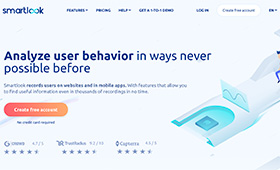UX Trends for 2018
As technology advances, it’s often the case that more capabilities make things more complicated, not less. To deliver a quality user experience, taking the complex and making it as simple as possible is absolutely crucial.
With the way things have proceeded in recent years, it’s a safe bet to assume that UX trends in 2018 will endeavor to deliver even more user friendly experiences. Here’s a look at six key UX trends to keep watch for and what they mean for the end user.
Even More Voice Capability
Apple’s Apple TV device received Siri capabilities in 2015. Amazon also invested heavily in developing Alexa, a fully voice operated system integrating with multiple home electronics systems.
Having the ability to determine whether a user is requesting a command from the device or having a casual conversation is important. Technology allowing for more advanced speech recognition patterns will improve these distinctions, allowing for less awkward activations.
With just two of these large companies making continued strides in voice recognition, it’s clear that they see money to be made in dominating the space. As more consumer become accustomed to these features, they’ll expect it elsewhere as well.
Sensory feedback
Haptic feedback already provides a physical, tactile stimulus to the user when when using a digital interface. Believe it or not, technology trends are already trying to implement smell and taste as well.

Scentee’s unique add-on for your mobile phone lets you associate particular smells with particular notifications. Apps include scented notifications for emails and Facebook “Likes”. Even “Timer scents” that work with your phone clock alarm to ease you into the day with a favorite aroma.
Reaching for your phone after receiving a text message, a vibration alerts you that you have an unread message. Developers can also send similar alert messages to trigger impulses to which drives a desired result from their user.
Facebook is taking charge on this trend, investing in ways to turn language into vibration feedback at their Building 8 research labs.
Failure Mapping for Improved Interactions
By taking into account which actions are most prone to user error, designers can predict ways to solve interface fatigue. For consumers, the more difficult it is to use an interface the less likely they are to continue using it.
Failure Mapping allows for steps to be taken to counteract as many issues as possible, and often is implemented after extensive user feedback and testing. It can be something as simple as moving an add to cart button above the fold on mobile, or allowing a quantity slider on a checkout page. Smartphones are advancing in the marketplace after all.
When it comes to what aspects of UX design truly affect the bottom line of a project, whether or not users find that the interface capably solves their problem is paramount. The use of heat maps, traffic analytics and general feedback can all be used to recognise design oversights on the fly. Companies like Amazon employ advanced strategies to ensure as seamless an experience as possible.
Augmented & Virtual Reality
AR and VR have just begun to take their first steps out of infancy and having a major role in technology. Experiences like Pokemon Go have normalised Augmented Reality, whereas devices like Oculus Rift and HTC’s Vive have taken major steps for Virtual Reality experiences.
While VR tends to create a more personal experience that has to be utilised in a closed environment, AR allows for on the move, context sensitive uses. As more developers get their hands on this technology, the benefits users receive from having them available will increase and demand will grow.

With Ikea’s new app, called Ikea Place, you can use your phone’s camera to place digital furniture anywhere in a room.
Mood As Interface
The idea of your device anticipating and adjusting itself according to your mood swings may seem out of science fiction, but it’s a real tactic that may change how we view technology.
Using advanced biometrics technology, it’s possible to scan for users’ brainwaves and tailor a customised experience. Acura already did a demonstration at the 2017 Sundance Film Festival. By hooking up the audience to an EMOTIV headset, members of the audience got to experience first-hand what it was like to be inside the Acura NSX driver’s seat.
The line between virtual reality and thought is slowly beginning to blur, and with it, the number of applications and uses is skyrocketing.
Persona Responsive Design
If you’ve ever tried to use the same website or app across multiple devices, you already realize how it can often be an inconsistent experience. Persona responsive design tries to alleviate these types of issues by tailoring the interface to the individual using it.
By creating personas for large segments of users and then fine-tuning behavior patterns, designers can create more intuitive interfaces that cater to specific types.
Devices like Microsoft’s Surface integrate tightly with desktop and mobile platforms. Across every device, it’s possible to have a unified login that allows for versatile customisation tailored for each user.
As technology continues to evolve, the distinction between hardware will be negligible, and users will become more accustomed to having specific experiences no matter what device they’re using.
Conclusion
With new technology and more improvements coming to existing platforms, UX design practices will continue to evolve for the end user. The companies and designers that continue to put the experience first will thrive within any environment, and their customers will thank them for it.







No responses yet to “UX Trends for 2018”